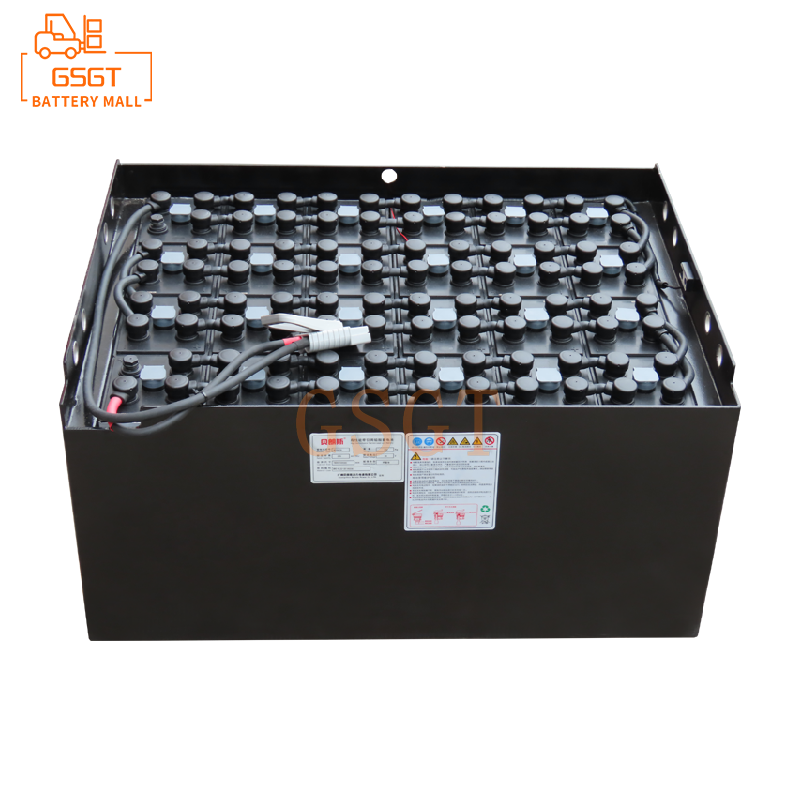Time:2025-07-14 10:31:48
Browse:630
In the logistics and transportation process of industrial production, forklifts play a crucial role. The lead-acid battery of the forklift, as its power source, is like the "heart" of the forklift, and the electrolyte is the "blood" that keeps this "heart" running normally. Regular inspection of the electrolyte in forklift lead-acid batteries not only ensures the normal operation of the forklift and extends the service life of the battery, but also avoids production interruption and safety hazards caused by battery failure.
Basic understanding of electrolytes
The electrolyte of forklift lead-acid batteries is a liquid made by mixing distilled water and sulfuric acid in a certain proportion. It plays a role in conducting ions in the chemical reactions inside the battery, enabling the battery to achieve the charging and discharging processes. Once there is a problem with the electrolyte, the performance of the battery will decline significantly, which in turn will affect the working efficiency of the forklift.
The core points of regular inspection
Check the electrolyte level
The electrolyte level is one of the important indicators for inspection. During the use of a storage battery, the electrolyte will gradually decrease due to electrolysis and evaporation. If the liquid level is too low, it will cause the plates to be exposed to the air, accelerating the oxidation and corrosion of the plates and shortening the service life of the battery. If the liquid level is too high, the electrolyte may overflow during the charging process, corroding the battery casing and surrounding components. It will also cause a decrease in the concentration of the electrolyte, affecting the performance of the battery.
When checking, first open the battery's liquid filling cap and observe whether the liquid level is between the upper and lower liquid level marks. Generally speaking, the liquid level of the electrolyte should be 10 to 15 millimeters higher than the plates. If the liquid level is lower than the mark below, distilled water should be replenished in time. (Note: Do not add tap water or mineral water as they contain impurities that may affect the performance of the battery.) When replenishing, add slowly to avoid overflow. Add until the liquid level reaches the upper mark.
Test the density of the electrolyte
The density of the electrolyte can reflect the charging state of the storage battery. Under normal circumstances, the density of the electrolyte in a fully charged battery at 25℃ is approximately 1.28g/cm³. At the end of discharge, the density is approximately 1.11g/cm³.
When conducting the test, a hydrometer must be used. First, insert the pipette of the hydrometer into the liquid filling hole of the battery, draw up a small amount of electrolyte, and observe the reading of the hydrometer. At the same time, attention should be paid to the influence of ambient temperature on density. If the temperature is not 25℃, corrections need to be made. If the density is lower than the specified value, it indicates that the battery is undercharged and should be charged in a timely manner.
Observe the purity of the electrolyte
The purity of the electrolyte directly affects the internal chemical reactions of the storage battery. If impurities (such as metal shavings, dust, etc.) are mixed into the electrolyte, it will cause the internal self-discharge of the battery to intensify, shorten the service life of the battery, and even may cause a short circuit of the plates.
When inspecting, observe whether the electrolyte is clear and transparent. If the electrolyte is found to be turbid, with sediment or abnormal in color, it indicates that the electrolyte has been contaminated. The electrolyte should be replaced in time and the interior of the battery should be cleaned. When replacing the electrolyte, first drain all the old electrolyte, rinse the battery interior with distilled water 2 to 3 times, and then add new qualified electrolyte.
Frequently Asked Questions and Answers
Question: How often is it appropriate to check the electrolyte of a forklift's lead-acid battery?
Answer: Generally, it is recommended to check the electrolyte level and density once a week. However, if the forklift is used frequently or the working environment temperature is high (such as in summer or high-temperature workshops), the inspection cycle should be shortened, and it can be inspected once every 3 to 4 days. In addition, it is also best to check the electrolyte once before and after charging the battery.
Question: What should I do if I accidentally add the wrong liquid (such as tap water) when replenishing the electrolyte?
Answer: If only a small amount of tap water is mixed in, the use of the battery should be immediately stopped. All the electrolyte should be drained, and the interior of the battery should be repeatedly rinsed with distilled water until it is clean. Then, qualified electrolyte should be added again and the battery should be charged. If a large amount of tap water is mixed in, it may cause serious damage to the plates. In this case, it is recommended to have the battery inspected and evaluated by professionals. If the damage is severe, the battery needs to be replaced.
Summary
Regular inspection of the electrolyte in forklift lead-acid batteries is a crucial step to ensure the normal operation of forklifts and extend the service life of the batteries. Through meticulous inspection of the electrolyte level, density and purity, as well as timely handling of the problems found during the inspection, the working efficiency of forklifts can be effectively improved and the failure rate can be reduced. At the same time, mastering the correct inspection methods and relevant precautions can make the inspection work more standardized and effective, providing a strong guarantee for the smooth progress of industrial production.

$1060

$3050

$5710

$1690

MESSAGE
Professional And Efficient
Security
Affordable Price
Professional Services